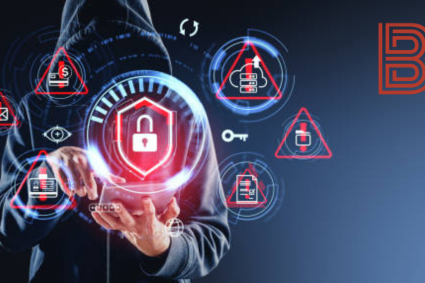Baretzky and Partners Latest News
Risk Mitigation and Compliance

by Admin
Information Technology Risk Management: A Comprehensive Guide
Information Technology (IT) risk management is a vital discipline in today’s interconnected world, where organizations rely heavily on IT systems and infrastructure to drive operations, innovation, and customer engagement. As technological advancements progress, so do the threats and vulnerabilities that could disrupt an organization’s ability […]
NewsRroom
by Admin
The Failure of Combating Scams and the Legal System’s Role in Facilitating Criminal Activities
The persistence and growth of scams, particularly banking and business-related, has become an alarming concern globally. Despite increasing awareness and advancements in technology, scammers continue to thrive, leaving victims, often entire families, in financial ruin, with some experiencing devastating psychological consequences. This paper examines the […]
NewsRroom
by Admin
Information Policy: Legal Applications and Its Importance in Corporate ResponsibilityBy Ricardo Baretzky, PhD in Law
I. Introduction In today’s increasingly interconnected world, information has become one of the most valuable commodities. Corporations, governments, and other organizations are constantly collecting, storing, and sharing data for business and regulatory purposes. As this information grows exponentially, so too do the legal and ethical […]
NewsRroom




The Dangers of Getting Involved in Money Laundering and Preventive Measures
by Admin
Money laundering is a serious crime that involves concealing the origins of illegally obtained money, typically by means of transfers involving foreign banks or legitimate businesses. While it may seem like a way to profit from ill-gotten gains, the dangers associated with money laundering are […]
NewsRroom
by Admin
White-collar crimes, characterized by non-violent financial wrongdoing typically committed by individuals in positions of power, pose significant risks in risk management.
These crimes can be broadly classified into several types:Fraud: This involves deception to secure unfair or unlawful gain. Common forms include securities fraud, where false information is provided to investors, and insurance fraud, which involves falsifying claims for financial benefit. Embezzlement: This is the misappropriation […]
NewsRroom
by Admin
Risk mitigation is a critical process in managing potential threats to any project, business, or operation.
It involves identifying risks and implementing measures to reduce their likelihood or impact. Here are ten key steps to effective risk mitigation:1. Identify Risks: Begin by identifying all potential risks. This includes financial, operational, strategic, and compliance risks. Use tools like SWOT analysis (Strengths, Weaknesses, […]
NewsRroom
by Admin
The Danger of Deepfake Scams: Implications for Risk Management and Prevention
In today’s digital era, deepfake technology has rapidly evolved, posing significant risks to individuals, businesses, and governments. Deepfakes, which involve the manipulation of audio, video, or images using artificial intelligence (AI) to create hyper-realistic yet fake content, have introduced new challenges in the realm of […]
NewsRroom
by Admin
A Record of Processing Activities (RoPA) is a key document required under the General Data Protection Regulation (GDPR), specifically under Article 30.
It serves as an internal record for organizations to document all personal data processing activities they engage in. Maintaining a RoPA is crucial for demonstrating compliance with GDPR and enables organizations to understand how personal data flows through their operations. The RoPA must include detailed […]
NewsRroom
by Admin
Due Diligence in Sanctions Compliance: A Cornerstone of Risk Management
Sanctions compliance has become an integral part of risk management for businesses operating in the global marketplace. As international sanctions regimes proliferate and evolve, companies face increasing pressure to ensure that their operations, investments, and transactions do not violate these regulations. The consequences of non-compliance […]
NewsRroom
by Admin
Critical Infrastructure Risk Management (CIRM) is a systematic approach to identifying, assessing, and mitigating risks associated with the essential services and assets that are crucial to a nation’s security, economy, public health, and safety.
These infrastructures include sectors such as energy, water, transportation, healthcare, and telecommunications. Effective CIRM is vital because any disruption to these services can have severe consequences, not only locally but also on a national or even global scale. One of the key components of CIRM […]
NewsRroom
by Admin
Qualitative and quantitative risk analysis are two distinct approaches within risk management, each with its own methodology, tools, and applications.
Understanding the differences between these two methods is crucial for effective risk management. Qualitative risk analysis is a subjective process that focuses on assessing risks based on their probability of occurrence and potential impact, typically using descriptive scales (e.g., high, medium, low). It is often […]
NewsRroom
by Admin
Counterparty due diligence is a critical component of risk mitigation for businesses and financial institutions.
It involves thoroughly assessing the entities with which a company engages, whether they are suppliers, customers, partners, or other stakeholders. This process is essential for identifying potential risks that could arise from these relationships and for implementing strategies to mitigate those risks. The Importance of […]
NewsRroom
by Admin
Threat hunting in cyber risk management is a proactive process aimed at identifying and mitigating potential threats before they can exploit vulnerabilities in a system.
Unlike traditional reactive security measures that rely on alerts triggered by known threats, threat hunting involves actively seeking out anomalies and patterns that could indicate the presence of malicious activity. This approach is essential in the modern cybersecurity landscape, where advanced persistent threats (APTs) and […]
NewsRroom





















